Many dogs love splashing around or hanging out by the pool, but honestly, drinking that chlorine pool water? That’s not such a great idea for them.
Pools are full of chemicals like chlorine and cyanuric acid, and those can really mess with a dog’s stomach—or worse, their kidneys—if they gulp down too much.
Your best bet is to make sure your pup always has fresh, clean water right there and to keep an eye on them when they’re near the pool.
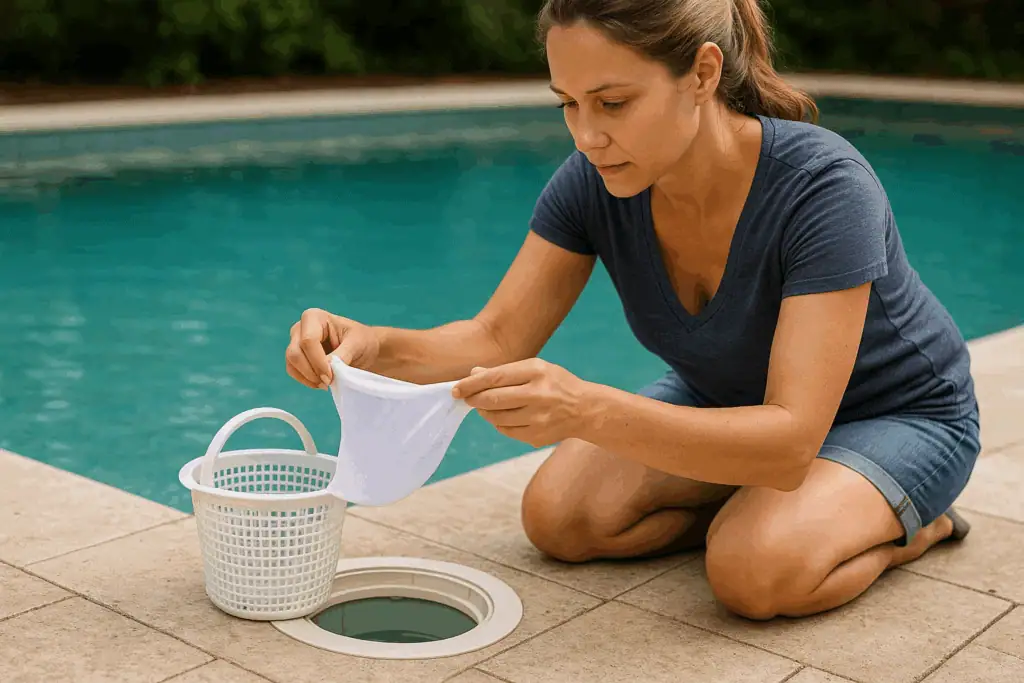
Dogs get thirsty after running around outside or swimming. Some just don’t realize pool water isn’t meant for drinking. If you keep a water bowl handy and pay attention to your dog’s habits, you’ll go a long way toward keeping them safe and hydrated.
Let’s talk about why pool water’s a problem for dogs and how a few simple changes can make a big difference for their health.
Why Pool Water Is Dangerous for Dogs
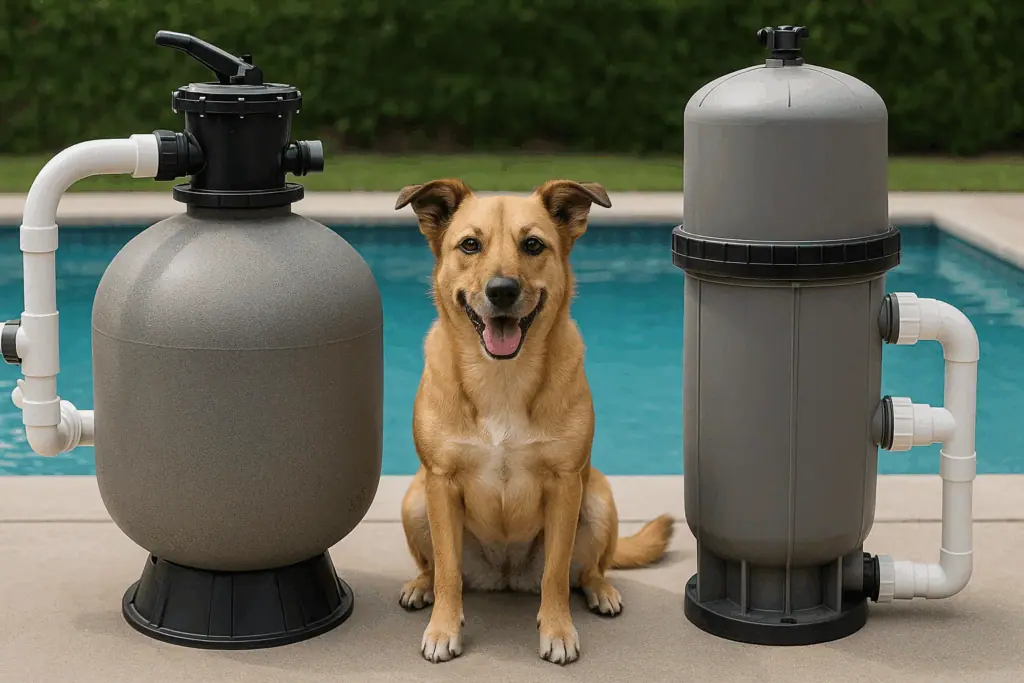
Dogs are curious creatures and, yeah, sometimes they’ll sneakily be seen drinking the pool water. But that water? It’s a cocktail of stuff that’s not great for them.
Chlorine and Other Harmful Chemicals in Pools
Pool owners add chlorine and bromine to keep water clean and clear. These chemicals fight off germs and algae, but if your dog drinks the water, those chemicals go right into their system.
Pools often have cyanuric acid too, which helps chlorine last longer. Even if the water’s technically “safe” for people, that doesn’t mean it’s okay for pets. These chemicals can upset a dog’s stomach and, over time, do more serious damage.
Some pools have extra stuff like algaecides or clarifiers. Those can irritate a dog’s gut. And saltwater pools? They’re not a free pass—dogs can still get sick from the salt and the residual chlorine.
Health Risks Associated with Pool Water
If a dog drinks pool water, you might see vomiting, diarrhea, or a sore belly pretty quickly. Some dogs are more sensitive, especially if they already have tummy issues. Even a little bit can be enough to cause problems for some pups.
If a dog drinks a lot of pool water, things can get scary. There’s something called water intoxication—basically, their sodium levels drop dangerously low, and their body can’t handle it. It’s rare, but it can be life-threatening.
And if the pool isn’t super clean? Fecal matter, bacteria, or parasites could be lurking, which just adds to the risk of infections and stomach bugs.
Signs of Pool Water Ingestion
If you think your dog drank from the pool, keep your eyes peeled for:
- Vomiting
- Diarrhea
- Excessive drooling
- Lethargy or acting tired
- Loss of appetite
- Stomach pain or discomfort
Water intoxication can look like confusion, trouble walking, or even seizures. If your dog’s been throwing up or has diarrhea for a while, dehydration is a real concern. When in doubt, call your vet—better safe than sorry.
Common Reasons Dogs Drink Pool Water
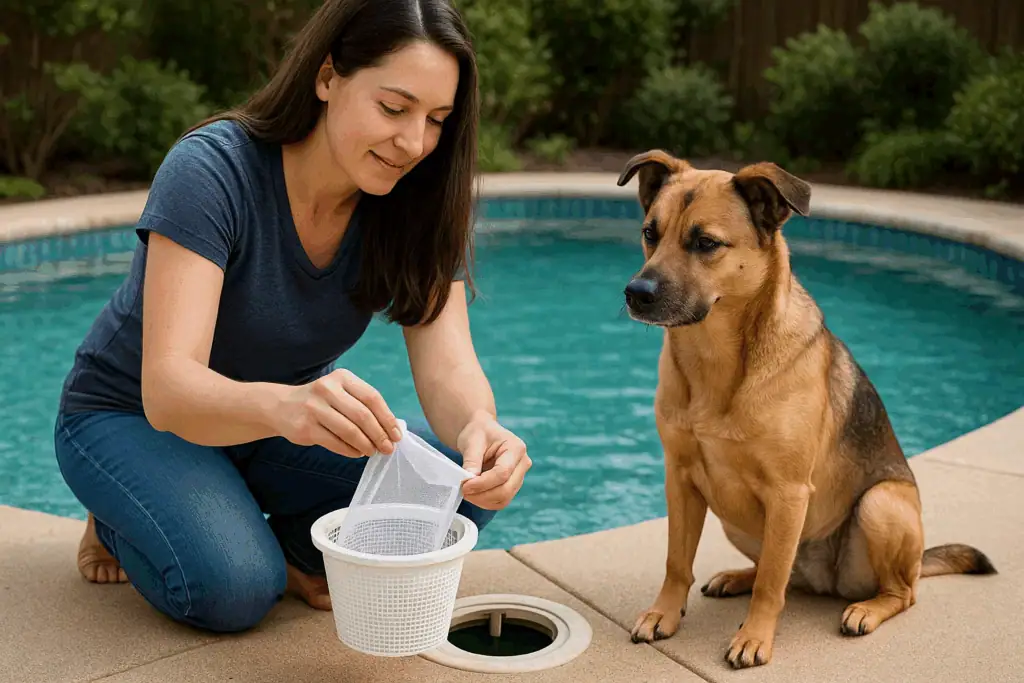
Why do dogs go for the pool water in the first place? It’s not just because they’re trying to drive you crazy. There are a few reasons.
Dehydration and Lack of Fresh Water
If a dog can’t find fresh water, they’ll look for whatever’s closest. On a hot day or after playing hard, that pool is right there, looking cool and inviting.
Thirsty dogs aren’t picky. If their bowl’s empty, they’ll settle for pool water—even if it’s full of chlorine. Sure, a few sips now and then probably won’t hurt a healthy dog, but it’s not a habit you want to encourage. Always keep a bowl of clean, cool water in the shade.
Tip: Check that water bowl often, and don’t let it run dry.
Attraction to Pool Environment
Pools are basically dog magnets. Splashing sounds, toys bobbing around, people laughing—all of it draws them in.
It’s cooler by the pool, too, so dogs will hang out there to escape the heat. And if the family’s out swimming, dogs want to be part of the action. Sometimes they just copy what they see—if you’re in the pool, maybe they think they should be, too.
Checklist:
- Dogs are drawn to the pool for:
- Cooling off
- Copying their humans
- Chasing after toys
Curiosity and Behavior
Dogs explore the world with their noses and mouths. Pools are new, interesting, and full of different smells and tastes.
Puppies especially will try anything once. Sometimes, drinking from the pool just becomes a habit—maybe out of boredom, maybe just because no one stopped them early on. If you don’t redirect them, it can become their go-to move.
Note:
Training and keeping your dog busy with other things can really help curb this behavior.
Potential Health Effects of Ingesting Pool Water
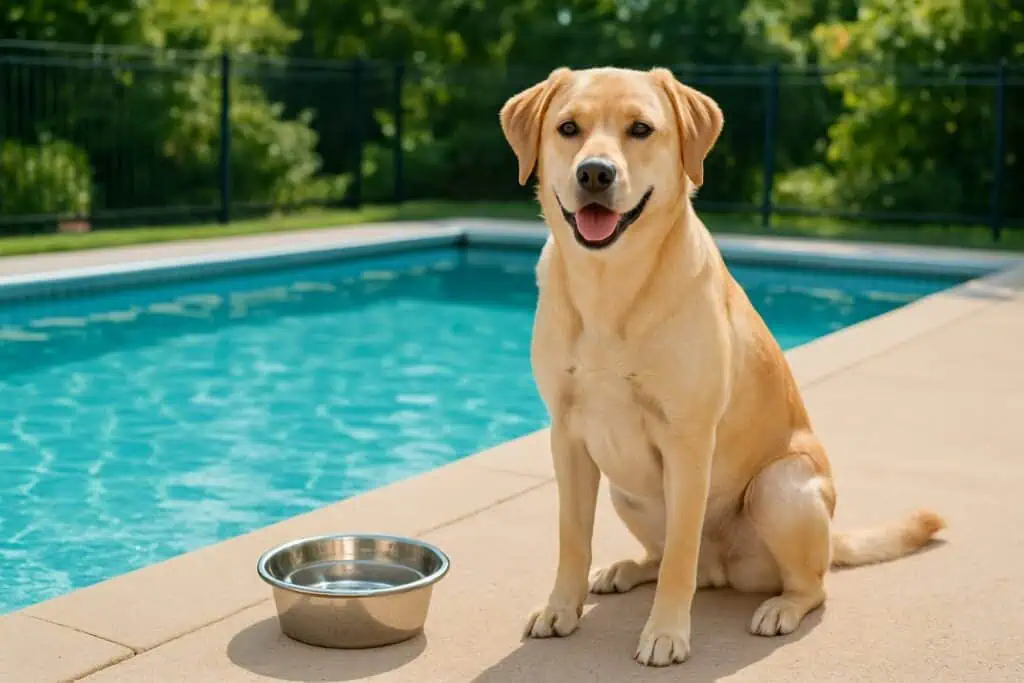
Dogs who drink pool water get exposed to chemicals, germs, and who knows what else. Sometimes the effects show up fast, other times it’s more of a slow burn.
Short-Term Symptoms
You might see vomiting, diarrhea, or stomach discomfort not long after your dog drinks water from the pool. Chlorine and bromine are usually to blame, but if the pool’s got algae, bacteria, or even poop, that can make things worse. Puppies, seniors, and dogs with weak immune systems tend to get hit harder.
If a dog swallows a lot, keep an eye out for water intoxication: swelling, irritation, confusion, extreme tiredness, or even seizures. It’s rare, but it happens.
Long-Term Health Consequences
A healthy dog who sneaks a sip now and then probably won’t have lasting issues, but if your dog consuming large amounts of pool water becomes a habit? That’s a different story. Repeated exposure to chlorine or bromine can irritate their throat and stomach.
Over time, those chemicals can start to affect organs like the kidneys or liver, especially if the pool uses a lot of cyanuric acid. If the water’s contaminated, chronic tummy troubles or dehydration can set in, especially if there are bacteria or parasites.
When to Consult a Veterinarian
If your dog chugs a bunch of pool water and starts vomiting, having lose stools, gastrointestinal problems or just seems exhausted, it’s time to see the vet. Water intoxication—confusion, weakness, stumbling—needs immediate attention.
Bring details about your pool chemicals, recent cleanings, or any weird stuff you’ve noticed in the water. That info can help your vet figure things out faster.
If symptoms drag on or get worse, don’t wait—get help. Fast action can make a real difference.
How to Stop Your Dog From Drinking Pool Water
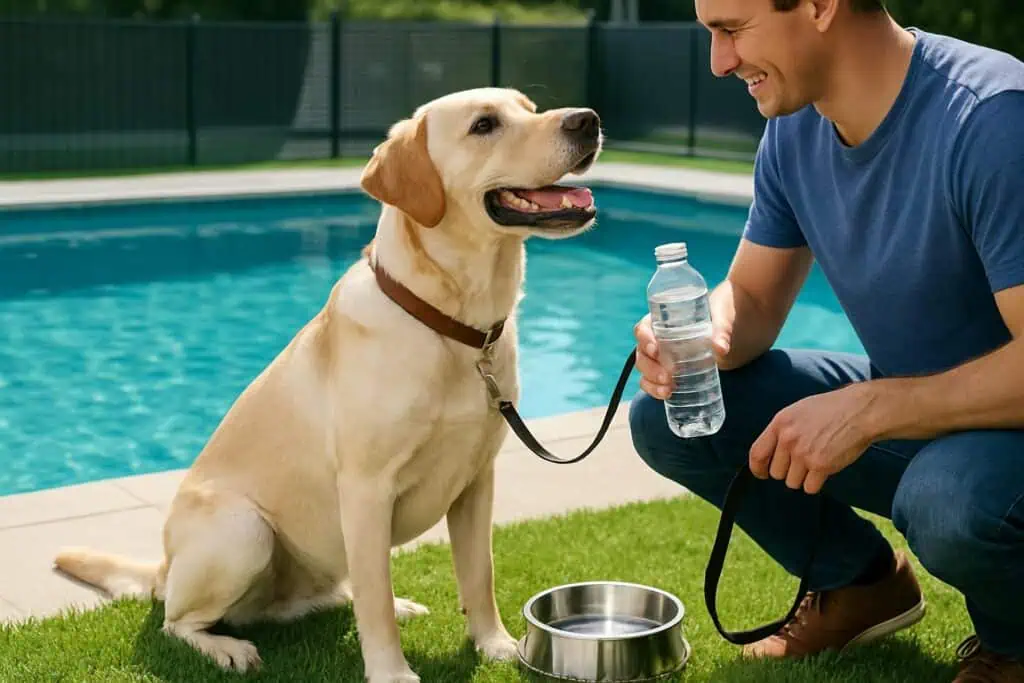
Dogs are tempted by pool water, but it’s really not safe for them. Chemicals and germs can do a number on their health, so it’s up to us to keep them out of trouble and practice pool safety.
Providing Fresh Water Alternatives
Always, always have fresh, clean water available for your dog by the pool. Clean the bowl, refill it often, and keep it in the shade so it stays cool.
If your dog ignores the usual bowl, try a pet fountain or toss in some ice cubes. Sometimes, a little novelty makes all the difference. Dogs will pick clean, cold water if it’s easy to get to and more appealing than the pool.
Check and refresh their water a few times a day, especially after swimming or running around. If they wander toward the pool, gently redirect them to their bowl—consistency helps them learn what’s okay.
Supervising Your Dog Near Pools
Supervision really is key. Stay close and keep an eye on your dog whenever they’re near the pool. If they make a beeline for the water to drink, call them back and offer their own bowl.
Watching your pet also helps prevent swimming mishaps and boosts pet safety in general. When you’ve got guests or a busy backyard, pay extra attention. If you can’t watch your dog, it’s better to keep them away from the pool area.
Using Pool Covers and Barriers
A solid pool cover or safety fence is a game-changer. It keeps dogs out when you’re not using the pool and stops them from sneaking a drink or falling in.
Make sure the cover is pet-safe and can actually hold your dog’s weight—some covers are more like nets and won’t cut it. For extra peace of mind, add a sturdy fence or gate so your dog can’t get close to the pool unless you’re there.
Barriers are great when you have to leave your dog outside for a bit. They help prevent both drinking and accidental falls, making your yard a safer hangout for everyone.
Safe Pool Maintenance Practices
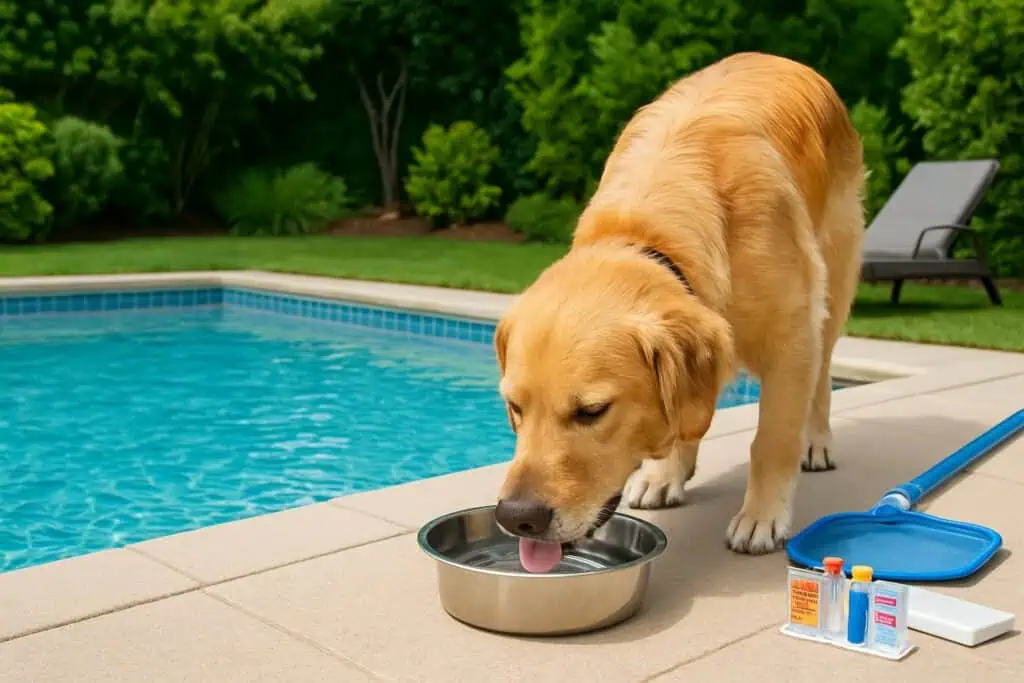
If you want a pet-friendly pool that your dog can swim in, you’ll need to be thoughtful about chemicals, cleaning, and water quality. Keeping things balanced and tidy lowers the risks for your dog.
Choosing Pet-Friendly Pool Chemicals
Most folks use chlorine to keep pools clean. Both do their job, but too much can bother your dog’s skin, eyes, or belly if they swallow the water. Try to stick to the lowest effective amount—for chlorine, that’s usually 1–3 ppm. Don’t go overboard.
Some people like saltwater pools since they use less chlorine and are easier on pets. Just remember, there’s still some chlorine in there as the salt is converted to chlorine.
Always keep pool chemicals out of reach, and never add them while your dog’s swimming. That’s just asking for trouble.
Regular Pool Cleaning to Prevent Contaminants
Cleaning your pool regularly gets rid of debris, dirt, and all that organic gunk that can mess with your dog’s health. Grab a skimmer net and scoop out leaves, bugs, and grass—ideally every day if you can swing it. Clean out filters every week, and empty the baskets whenever they start to fill up.
Vacuuming the pool floor a couple of times a week keeps dirt and waste from piling up, which can otherwise create a breeding ground for bacteria. Maybe keep a checklist handy to remember what needs doing:
| Task | Frequency |
|---|---|
| Skim debris | Daily |
| Clean filters | Weekly |
| Vacuum pool floor | 2–3x weekly |
If you’re consistent with cleaning, the water stays clearer and your dog’s less likely to sneak a sip of something gross.
Managing Algae and Bacteria Levels
Algae and bacteria thrive in pools that don’t get enough attention or if sanitizer levels dip too low. These can easily upset your dog’s stomach or even cause infections if they end up drinking the water.
Test the pool water at least twice a week for pH, chlorine, and bromine. This keeps those pesky algae blooms in check. Choose algaecides labeled pet-safe (double-check the label, always) and actually follow the instructions; it matters. Keeping pH between 7.2 and 7.8 makes chlorine work better and helps stop algae before it starts.
If your dog swims a lot, you might want to test even more often—fur and oils can throw off your pool’s balance. After a swim, rinse your dog with fresh hose water to wash off any lingering chemicals.
Training Your Dog to Avoid Drinking Pool Water
Dogs get curious around pools, and that curiosity can lead them to drink the water. It’s up to pet owners to set clear boundaries, rely on rewards, and keep a close eye on things. That way, you’re not just hoping for the best—you’re actually protecting your dog.
Establishing Boundaries Around the Pool
Teaching your dog where they can and can’t go around the pool area makes a real difference. Lots of people use barriers like baby gates or pool fences to block access when the pool’s not in use. It helps your dog understand the difference between play areas and off-limits spots.
You can also mark the pool’s edge with cones or ropes if your dog’s nearby. Practice on-leash training around these boundaries. If your dog heads toward the water, gently guide them back and give a firm “no” or “leave it.”
Don’t expect instant results. Consistency matters. Over time, your dog will start to get it—the pool’s edge means stop, even if you’re not right there watching.
Positive Reinforcement Techniques
Rewarding good choices goes a long way with dogs. When your pup decides to drink from their water bowl instead of the pool, that’s your cue—treat, pet, or praise them right then and there.
Some ideas for positive reinforcement:
- Treats: Offer a small, healthy treat when your dog drinks from their bowl.
- Verbal praise: Say things like “good dog” or “nice job” to let them know they nailed it.
- Clicker training: If you use a clicker, hit it the moment they make the right choice.
Skip the punishment—just redirect and focus on the wins. Eventually, most dogs will stick to their fresh water and leave the pool alone. At least, that’s the hope!
Consistent Supervision and Correction
Keep an eye on your dog whenever they’re near the pool, especially while you’re still teaching them the ropes. If they wander over and look like they’re about to take a sip from the pool, try calling their name or tossing a toy to pull their attention elsewhere.
When your dog does try to drink from the swimming pool, gently steer them toward their water bowl instead. If they listen, give them a little praise or a treat—positive reinforcement goes a long way. Sometimes, using a long leash during swim or playtime makes it easier to guide them away from the pool if things get tricky.
Honestly, keeping a fresh bowl of water close by just makes sense. If your dog always has clean water handy, they’re way less likely to think about drinking from the pool in the first place. It’s not always easy to stay on top of it, but this kind of regular attention keeps everyone safer around the water.
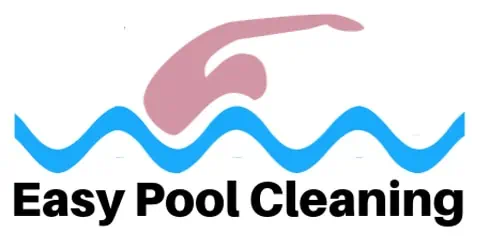
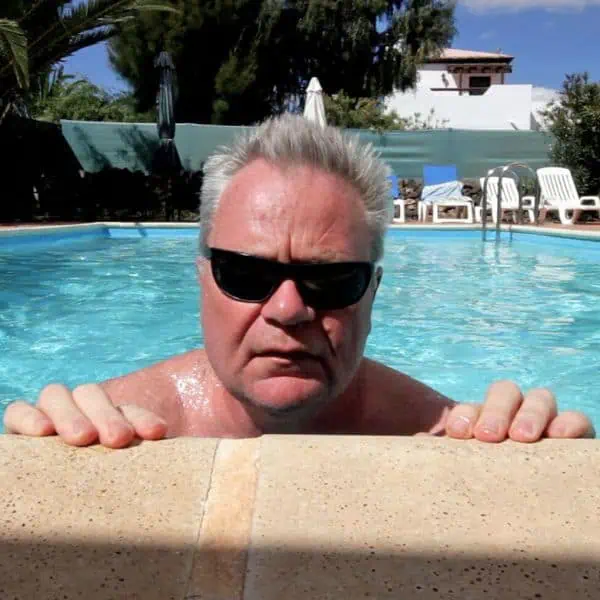


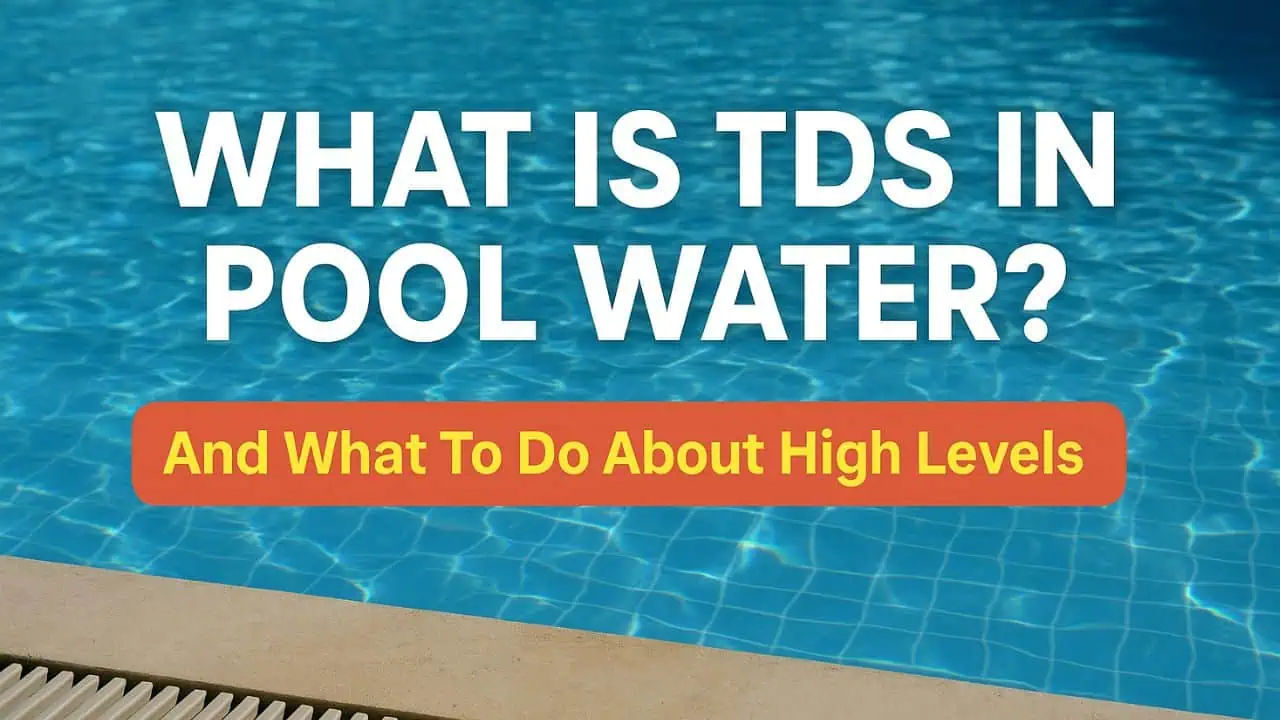
Leave a Reply